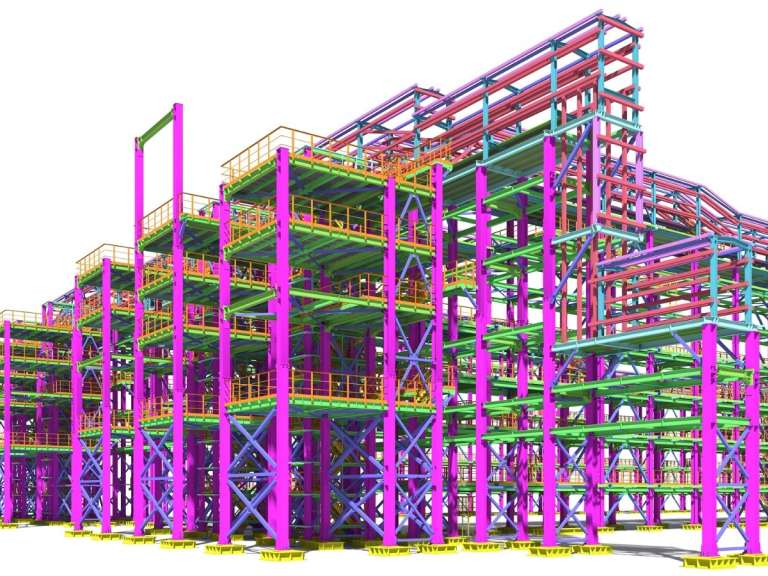Imagine being able to fly down a 3D-rendered steam path piping, where pressures can reach 190 bar during operation, or get up close and personal with the internal workings of a gas turbine. Imagine seeing a digital model of an entire power plant through a set of VR goggles—from the details of the boiler tube layout to the gas flow elements in the HRSG.
That's exactly what 3D visualization services offer. This emerging technology gives power plant designers, owners, and operators a route to far greater efficiency for planning and executing new-build, refurbishment, and ongoing-maintenance projects.
Going Virtual Accelerates Project Planning
As the energy sector has become more focused on efficiency and flexibility, there's increasing pressure to finish projects on schedule to ensure the most availability. Simultaneously, power plant designs are becoming more modular, as OEMs look to support installation and reduce on-site fabrication.
3D visualization services are able to account for the added complexity of modern power plant designs by simulating the entire plant. In a CCGT, the simulation includes the gas turbine, the heat recovery steam generator, the steam turbine, the generator and condenser, and even balance-of-system components like the switch yard and transmission connecting lines. The simulation even reveals the detailed routing of ancillaries like fuel pipes and air ducting, alongside structural and civil elements, as well as the major components.
The leap to 3D visualization came in response to the realization that existing approaches to scheduling engineering projects were not capable of supporting the increasing complexity of modern power plant designs. 3D visualization systems can even take inputs from contractors and customers, as well as from technical field operatives using PDAs.
The most exciting benefits emerge, however, when users apply a fourth dimension.
Wait, There's a 4D—That's Visible?
Does this technology make physicists' fabled fourth dimension visible? No. The 3D visualization process does, however, offer unique project-planning benefits when users apply a fourth parameter: integrated project timelines.
By attaching a timeline to the 3D engineering model through industry scheduling programs like Primavera, users can visualize a virtual simulation of the project schedule. Such methodologies greatly aid the installation and engineering phases of a project by detecting potential problems from the get-go.
Initially, the system models a preferred schedule path for a major component or module. The user can then insert this into the overall schedule timeline to reveal what's actually happening on site. Showing functions like heavy lifts using the gantry crane, for example, can reveal where operators need more space for certain movements. Using time-based clash detection, the simulation identifies and indicates potential issues ahead of time, averting delays.
3D Approach Provides 360-Degree Insight
To further improve planning, 3D visualization services allow installation engineers to provide feedback to designers. That way, they can suggest modifications to enhance the installation characteristics of any required equipment.
With a timeline displaying plans for the hours, days, and weeks that different project processes are underway, the system shows project managers completed tasks, as well as components or elements that are missing or behind schedule. This data is then fed back into the simulation, allowing the user to model different scenarios to get the project back on track.
For example, one scenario may be to accelerate other elements of the project in order to maintain the overall schedule, if some elements must be delayed. During every stage and for every scenario, the system identifies any potential clashes early. This enables forward planning with subcontractors and suppliers, smoothing the project's progress.
3D visualization services already offer a unique viewpoint for engineering projects, but by adding a scheduling element, the "4D" system offers far more. With power plants losing $1 million per day or more during downtime, according to PEI, the importance of completing installation and maintenance projects on time has never been greater. In this reality, virtual modeling is delivering solid benefits.
